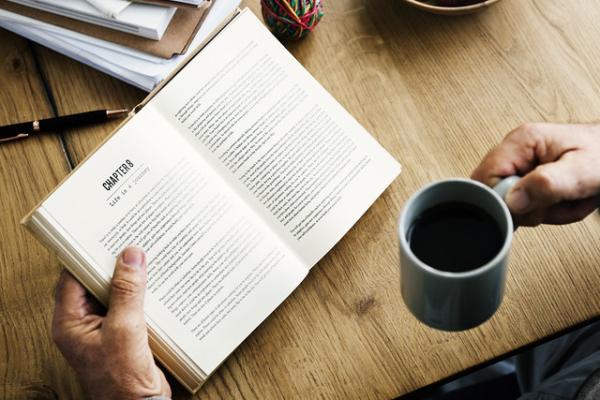I just finished reading a book by David Esterly, a woodcarver. Educated as a philosopher, he became a woodworker and his book, The Lost Carving A Journey to the Heart of Making is a reflective study of his work reproducing the work of a 17th-century master, Grinling Gibbons. Here is one of Gibbons carvings

Esterly is both a gifted writer and a woodcarver. Here it expands on the idea of dynamic tension, holding two opposing forces or thoughts simultaneously.
“But if you're going to hold the chisel in both hands, then where does the second hand go? Why hadn't they made the handle long enough for two hands? I tried putting one hand on top of the other. That way both would be on the handle, in some sense, and they could exert their strength together. But this was like driving a car from the backseat. There was plenty of power, but the blade kept skittering off the wood. It didn't work, pointing the tool from the rear and using the power of both hands not only to propel the blade but guide it, too. Instinctively, I shifted the top hand forward, grasping the steel shaft itself, in front of the other hand and close to the blade edge. Instantly I gained control over the chisel. Again, and again I dug shallow experimental valleys in the wood. Other revelations came. That front hand on the blade now had ceased to provide propulsive force for the chisel. Quite the opposite. The rear hand was providing, all the power, and the front hand was actually resisting that momentum. In fact, this was exactly how I was controlling the blade: One hand pushing against the other. When the muscles were pitted against one another in this way, the chisel edge moved with precision and power. The greater the tension, the more delicate the command over the blade.
What kind of principle was this? That only when the body is at war with itself can it control the chisel? Out of the quarrel with ourselves, says Yeats, we make poetry. Out of a muscular quarrel with ourselves, then, we make a carving? It reminded me of Hamlet, bitterly divided within. One part propels him toward revenge, and another part restrains him from action. Nonetheless, whenever he appears, he is the most commanding presence on the stage.”

“Would you carve a roast with a knife that had been used in a murder? Why not? And what does this tell us about ethics?”
So many words continue to be dedicated to the opioid epidemic. Purdue Pharmaceuticals remains the corporate face of the opioid epidemic, although an interesting fact, it is only the fourth-biggest supplier of opioids in the US with a 3% market share. Mallinckrodt, Actavis Pharma (now part of TEVA pharmaceuticals) and Endo Pharmaceuticals provided 88% of those drugs, but garner few words let alone headlines. But I digress. What I have found fascinating is how quickly many public and cultural institutions tried to distance themselves from contributions made by Purdue Pharmaceuticals owners, the Sackler family. Those institutions include the Guggenheim and the Tate. It seems to be part of a broader societal reassessment, like removing the statue of Columbus from Columbus Circle or removing Woodrow Wilson’s name from a building at Princeton. But I have often wonder, how an object, like money, a name, or a statue develops a taint. I believe I may have found a portion of the answer in an article from Aeon, Tainted by Association (12-minute read)
Here is a new phrase, at least for me, wealth work. Wealth work refers to services provided to the wealthier who can trade money for time; nannies are a classic example, so are dog walkers, house sitters, and personal trainers – all members of the “gig” economy.

“Even as automation has been “hollowing out” the job distribution by substituting for “middle-skill” production, clerical, and administrative support tasks, it has boosted the productivity and incomes of high-skill workers and allowed them to spend more on consumption, creating significant new demand for personal services. [Wealth work] To the extent that many of the resulting jobs tend to be nonroutine, manual, and often interpersonal positions, they may well be durable ones even in the face of technology. So that’s good. The problem, on the downside, is the poor, even dystopian, quality of wealth work and what that may presage. The growth of wealth work, after all, looks mostly to mean more job growth at the lower end of the pay spectrum, among jobs paying no more than $30,000 or $40,000 a year.”
Members of the Brookings Institute take a look at the phenomena in Who’s employed by the lifestyles of the rich and famous? (5-minute read)

“Wherever we go, we’re surrounded by sand. It’s in the floors beneath us, walls around us and ceilings above us, plus the sidewalks and roads we use to get from place to place. Sand is a key ingredient in concrete, asphalt, and glass, not to mention the silicon chips inside our phones and computers. It is an essential component of modern life as we know it, yet, strangely enough, we are starting to run out.”
99% Invisible looks at the world of design that is so ubiquitous that it disappears. Sand is one of those objects. You can read a summary of their podcast here, but for the full effect take the time to listen to the podcast, also found at the link. It will delight and inform that workday commute.
Grinling Gibbons work courtesy of Sailko
Roast beef courtesy of Stephen Johnson on Flickr
Dog walkers courtesy of badjonni on Flickr
Sand dunes courtesy of John Sullivan




